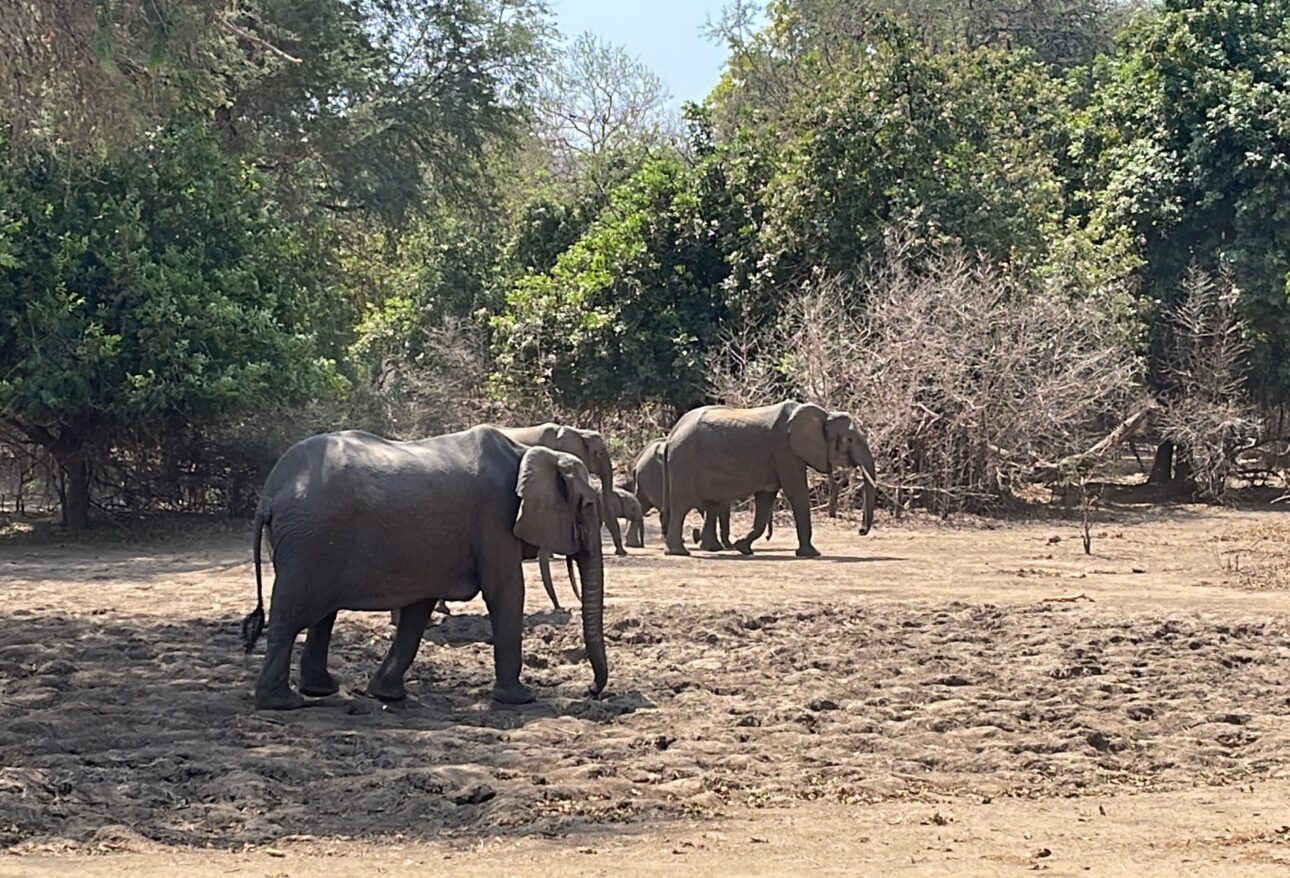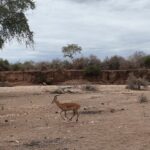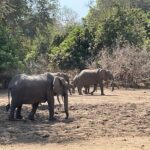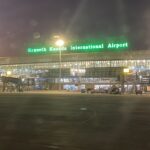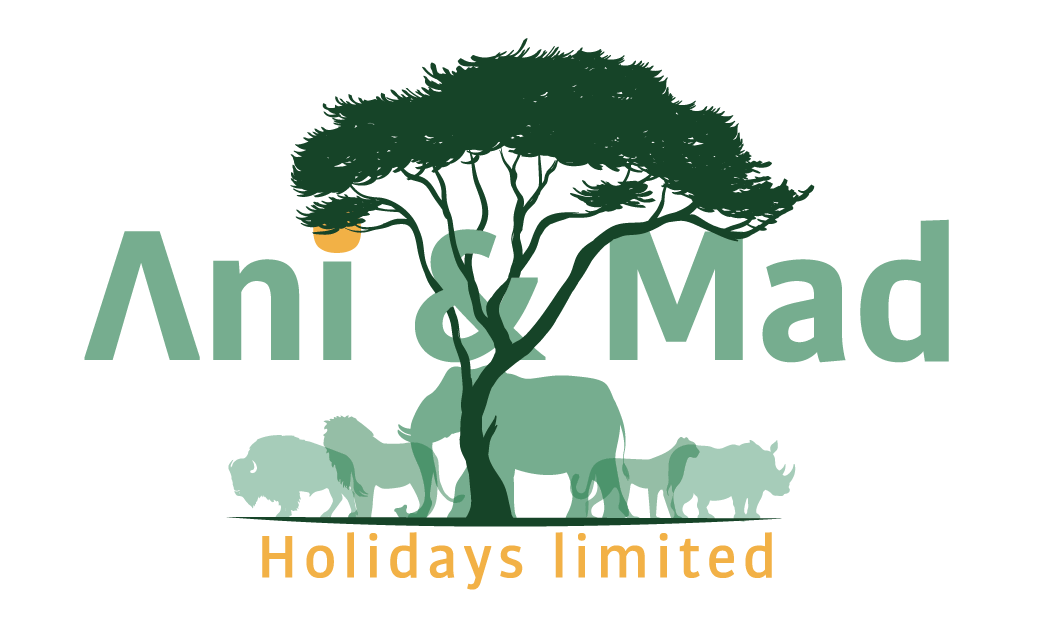Zambia is one of Africa’s hidden gems when it comes to wildlife adventures. With vast landscapes, untouched wilderness, and a rich variety of animal species, the country offers some of the most authentic safari experiences on the continent. Whether you’re searching for the Big Five, hoping to spot rare birds, or dreaming of a guided walking safari, Zambia’s national parks deliver unforgettable moments.
In this Zambia travel guide, we explore the top national parks where wildlife viewing is at its best. From famous names like South Luangwa to remote gems like Liuwa Plain, each destination offers a unique safari experience worth adding to your travel bucket list.
The Importance of Conservation in Zambia
Zambia’s breathtaking landscapes are home to an incredible diversity of wildlife species, from iconic lions and elephants to rare birds and unique antelopes. The country’s forests, grasslands, and wetlands form a vital natural habitat, supporting healthy wildlife populations and providing essential ecosystem services that benefit both animals and humans. These habitats allow species to thrive, maintain soil health, and support other species, creating a balanced environment that is an important part of the world’s biodiversity.
However, the survival of Zambia’s wildlife is increasingly threatened by human activity. Deforestation, pollution, and unsustainable land use put pressure on habitats and disrupt the delicate balance of ecosystems. Protecting wildlife and their habitats is not only crucial for the animals themselves but also for local communities who depend on these resources for their livelihoods and cultural heritage.
Conservation in Zambia plays a critical role in ensuring that future generations can experience nature in its purest form. Sustainable resource management and community involvement are essential for maintaining healthy wildlife populations and preserving the country’s unique natural heritage. By supporting conservation, visitors and local people alike help secure the future of Zambia’s wildlife, forests, and ecosystems, ensuring that these treasures continue to benefit millions for years to come.
Threats to Wildlife in Zambia
Despite Zambia’s rich biodiversity, its wildlife faces a range of serious threats. One of the most pressing issues is the illegal wildlife trade, which targets animals such as rhinos and elephants for their horns and tusks. This illegal activity not only reduces wildlife populations but also undermines conservation efforts and the survival of threatened wildlife.
Habitat loss and fragmentation, driven by expanding agriculture, urbanization, and other forms of human activity, further endanger wildlife by shrinking and dividing the spaces animals need to survive. As habitats are lost, species are forced into smaller areas, increasing competition for resources and making them more vulnerable to extinction.
Climate change adds another layer of complexity, altering rainfall patterns and temperatures, which can disrupt breeding cycles, food availability, and the overall health of ecosystems. These changes threaten the survival of many species and can lead to declines in both animal and plant populations.
Human-wildlife conflict is also a significant challenge, as animals sometimes encroach on farmland or settlements in search of food or water. This can lead to loss of crops, livestock, and even human life, making coexistence difficult.
To address these threats, conservation efforts in Zambia must focus on protecting wildlife habitats, combating the illegal wildlife trade, and finding solutions that promote peaceful coexistence between humans and wildlife. By tackling these challenges head-on, Zambia can help ensure the long-term survival of its remarkable wildlife populations and the ecosystems they depend on.
Conservation Efforts in Zambia’s National Parks
Zambia’s national parks are at the heart of the country’s conservation strategy, providing protected habitats for a wide array of wildlife species. Parks like South Luangwa and Kafue are not only sanctuaries for animals but also serve as important centers for wildlife tourism, which generates revenue and creates jobs for local communities.
Conservation initiatives within these parks are multifaceted. Anti-poaching patrols work tirelessly to protect wildlife from illegal hunting, while habitat restoration projects help repair damaged ecosystems and ensure that species have the resources they need to thrive. Community engagement programs are also essential, empowering local people to participate in conservation and benefit from the sustainable management of natural resources.
The Zambian government, in collaboration with conservation organizations, is committed to expanding and managing protected areas, establishing new national parks, and safeguarding the country’s wildlife resources. These efforts are vital for the survival of wildlife populations and the long-term health of Zambia’s ecosystems.
By visiting Zambia’s national parks and supporting conservation-focused tourism, travelers play an active role in protecting wildlife and habitats. Every visit helps fund conservation projects, supports local communities, and contributes to the ongoing survival of Zambia’s unique species and natural environments.
1. South Luangwa National Park
Located in eastern Zambia, South Luangwa National Park spans over 9,000 square kilometers along the Luangwa River. Known as the birthplace of the walking safari, the park is famous for its high concentration of game and unspoiled landscapes. It supports an impressive variety of wildlife including elephants, hippos, giraffes, buffaloes, leopards, lions, and over 400 bird species.
Why Choose to Visit: South Luangwa offers one of the most authentic wildlife experiences in Africa. The park’s strong reputation for walking safaris in Zambia allows visitors to explore the bush on foot, guided by experienced rangers. It is also one of the best places in Africa to spot leopards, thanks to their high population density.
Drawbacks: While rich in wildlife, South Luangwa is more remote than other parks, which can make travel slightly more challenging and potentially more expensive. Road conditions can be poor in the rainy season, and some lodges may only be accessible by air.
Best Time to Visit: June to October is ideal for wildlife viewing. During this dry season, animals gather around rivers and lagoons, increasing your chances of sightings.
2. Lower Zambezi National Park and Wildlife Conservation
Stretching along the northern bank of the Zambezi River, this park offers stunning landscapes of river channels, floodplains, and the Zambezi Escarpment. Wildlife includes elephants, lions, buffalo, leopards, crocodiles, and numerous bird species. The park is also home to a diverse array of fish species, which play a crucial role in supporting the ecosystem and maintaining biodiversity. The park covers 4,092 square kilometers and remains one of Zambia’s least disturbed ecosystems.
Why Choose to Visit:Lower Zambezi is unique for its water-based safaris. Visitors can explore the park by canoe, boat, or on foot — giving a more intimate perspective of the wildlife. The park’s peaceful setting, combined with excellent photographic opportunities and luxurious lodges, makes it a top choice for nature lovers and honeymooners.
Drawbacks:Because of its protected status, there are no budget facilities inside the park. Most accommodations are high-end lodges. Also, the park may be harder to access overland and is best reached by charter flights from Lusaka or Livingstone.
Best Time to Visit: Wildlife viewing is at its peak during the dry season from June to October, particularly near the riverbanks where animals gather in search of water.
3. Kafue National Park
Kafue is Zambia’s largest national park, covering 22,400 square kilometers. It features a mix of woodlands, rivers, and the famous Busanga Plains. This park is home to elephants, lions, leopards, cheetahs, hippos, crocodiles, and over 500 species of birds. The park also supports a rich diversity of insects, which play crucial roles in pollination, water purification, and as part of the food chain, making them important contributors to the ecosystem and indicators of its health. Its vastness offers a true sense of wilderness.
Why Choose to Visit:Kafue is ideal for travelers seeking off-the-beaten-path safaris in Zambia. The variety of ecosystems supports rare species like sable antelopes and African wild dogs. The Busanga Plains are a highlight, known for dramatic predator-prey interactions and open-plain views.
Drawbacks:Due to its sheer size and limited road infrastructure, wildlife sightings may require longer drives. Some areas can be inaccessible during the rainy season, and accommodation options are spread out.
Best Time to Visit:Visit from July to October for the best game viewing, especially in the Busanga Plains when the area is dry and animals congregate.
4. Liuwa Plain National Park and Wildlife Tourism
Liuwa Plain National Park is located in the far western corner of Zambia, near the border with Angola. Covering over 3,600 square kilometers, this remote park is characterized by vast open grasslands and seasonal floodplains. The park’s wetlands play a crucial role in providing clean water for both wildlife and the surrounding environment, supporting ecological health and community needs. It is home to Africa’s second-largest wildebeest migration, as well as spotted hyenas, zebras, lechwe, and a growing population of lions.
Why Choose to Visit:Liuwa offers a truly wild and exclusive safari experience with very few visitors and untouched landscapes. It’s perfect for adventurous travelers who want to witness unique wildlife behaviors, such as the wildebeest migration and large clans of hyenas. The park also supports excellent birding opportunities, especially during the wet season.
Drawbacks:Due to its remote location, reaching Liuwa Plain requires significant planning and often a 4×4 vehicle or small chartered flight. Accommodation is limited and tends to be on the expensive side. Accessibility is also seasonal, as roads become impassable during heavy rains.
Best Time to Visit:The best time to visit is from October to December, when the wildebeest migration is at its peak. The plains come alive with movement and the chance to see dramatic wildlife interactions.
5. North Luangwa National Park: Protecting Wildlife
Located north of its more famous sibling, South Luangwa, this park is one of Zambia’s most pristine and remote wilderness areas. Covering around 4,600 square kilometers, North Luangwa National Park is a rugged haven of miombo woodlands and river valleys. It’s home to elephants, buffalo, lions, hyenas, and Zambia’s only population of black rhinos, which have been successfully reintroduced through conservation efforts. This achievement is largely due to the dedication and expertise of conservationists, whose ongoing work ensures the protection and survival of these endangered animals.
Why Choose to Visit:North Luangwa is ideal for experienced safari-goers or nature lovers seeking a raw, off-the-grid wildlife experience. The park is renowned for its expert-led walking safaris, allowing visitors to explore the bush with minimal vehicle disturbance. Its exclusivity and limited visitor numbers ensure a truly immersive connection with nature.
Drawbacks:There are no public roads within the park and very few lodges, most of which only operate seasonally. It’s not suitable for self-drivers, and access is mainly by air or pre-arranged safari packages. The park is not ideal for first-time visitors or those looking for a wide variety of accommodations.
Best Time to Visit:The best time to visit is during the dry season from June to October, when wildlife is concentrated near water sources and walking conditions are safer.
6. Mosi-oa-Tunya National Park
Located in Livingstone, near the famous Victoria Falls, Mosi-oa-Tunya National Park is one of the smallest national parks in Zambia, covering just 66 square kilometers. Despite its size, it offers easy access to wildlife and is the only park in Zambia where white rhinos can be seen, under armed protection. Other wildlife includes elephants, zebras, giraffes, antelope species, and over 300 bird species.
Why Choose to Visit: Mosi-oa-Tunya is perfect for travelers who want a quick and accessible wildlife experience near Victoria Falls. Game drives and guided walking safaris are available without the need for extensive travel or expensive lodges. It’s a great option for families, first-time safari-goers, or those with limited time. The park also offers scenic views of the Zambezi River and is steeped in both natural and cultural heritage.
Drawbacks: Being a small and fenced park, it doesn’t offer the same wild and expansive feel as Zambia’s larger parks. Predators like lions, leopards, and cheetahs are absent, so sightings are limited to non-predatory species.
Best Time to Visit: Wildlife can be viewed year-round, but the best time to combine a Victoria Falls tour with a safari is between May and October, when the weather is dry and game viewing is easier.
7. Sioma Ngwezi National Park
Sioma Ngwezi National Park, located in Zambia’s Western Province, spans approximately 5,000 square kilometers, making it the country’s third-largest national park. The park is characterized by Kalahari woodlands, miombo, and teak forests, with flat terrains and seasonal wetlands. It forms part of the Kavango-Zambezi Transfrontier Conservation Area (KAZA TFCA), facilitating wildlife movement across Angola, Namibia, Botswana, and Zambia.
The park hosts a variety of wildlife, including over 3,000 elephants, Angolan giraffes, lions, leopards, hyenas, cheetahs, wild dogs, and numerous antelope species such as roan, sable, tsessebe, and kudu. Birdlife is abundant, with over 300 species recorded.
Why Choose to Visit the Park
Sioma Ngwezi offers a remote and authentic safari experience, ideal for adventurous travelers seeking solitude and pristine wilderness. Its inclusion in the KAZA TFCA allows for unique opportunities to witness transboundary wildlife migrations. Nearby attractions like Ngonye Falls and the Zambezi River enhance the experience with options for fishing, birdwatching, and cultural interactions with the Lozi people.
Drawbacks
The park remains underdeveloped, with limited infrastructure and amenities. Access requires a sturdy 4×4 vehicle, and visitors must be self-sufficient, bringing necessary supplies. Wildlife densities are lower compared to other Zambian parks, and animals can be elusive due to past poaching pressures.
Best Time to Visit
The optimal time to visit Sioma Ngwezi is from May to June, shortly after the rainy season, when water sources are abundant, and wildlife congregates around them. During the dry season, animals tend to migrate in search of water, making sightings less predictable.
Supporting Conservation Efforts as a Visitor
Travelers to Zambia have an essential and critical role to play in wildlife conservation. By choosing responsible tour operators and lodges that prioritize sustainable tourism practices, visitors help ensure that their presence benefits both wildlife populations and local communities. Participating in guided walks and game drives not only offers unforgettable wildlife tourism experiences but also generates vital revenue for conservation initiatives.
Supporting local communities is another powerful way to contribute. Purchasing locally made handicrafts and engaging with community-based conservation projects helps empower local people and fosters a sense of shared responsibility for protecting wildlife and habitats.
To minimize environmental impact, visitors should plan ahead, respect local customs and park regulations, and avoid actions that could harm wildlife, such as feeding animals or leaving litter behind. By making thoughtful choices, travelers help maintain the health of Zambia’s ecosystems and support the survival of its diverse wildlife populations.
Every visitor’s actions matter. By embracing responsible travel and conservation-minded practices, you help protect Zambia’s natural treasures, ensuring that its wildlife, habitats, and communities continue to thrive for generations to come.
Conclusion
Zambia’s national parks offer some of Africa’s most rewarding and authentic wildlife viewing experiences. From the predator-rich valleys of South Luangwa to the serene canoe safaris of the Lower Zambezi, and the remote, untouched wilderness of Liuwa Plain and North Luangwa, each park provides a unique encounter with nature. Whether you’re seeking the thrill of walking safaris, the beauty of river landscapes, or rare wildlife sightings, Zambia has something for every type of traveler.
For those craving adventure, Sioma Ngwezi and Kafue deliver off-the-beaten-path experiences, while Mosi-oa-Tunya offers convenient and family-friendly game viewing near the iconic Victoria Falls.
Collaboration among visitors, local communities, and conservationists is essential to find solutions for the ongoing challenges facing Zambia’s national parks. As Zambia continues to prioritize conservation and sustainable tourism, visiting these parks not only supports wildlife protection but also empowers local communities. Plan your journey wisely, travel responsibly, and get ready for an unforgettable safari in one of Africa’s best-kept secrets.

